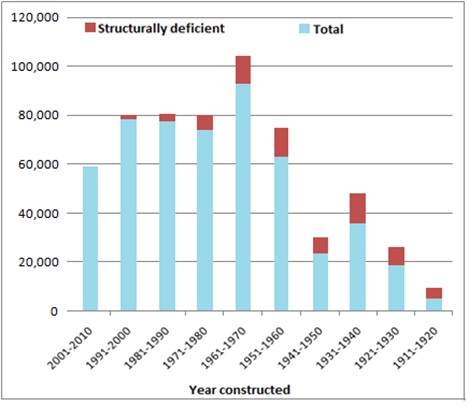Bridge Safety

About 6:05 p.m. Central Daylight Time on Wednesday, August 1, 2007, the eight-lane, 1,907-foot-long I-35W highway bridge over the Mississippi River in Minneapolis, Minnesota, experienced a catastrophic failure in the main span of the deck truss. As a result, 1,000 feet of the deck truss collapsed, with about 456 feet of the main span falling 108 feet into the 15-foot-deep river. A total of 111 vehicles were on the portion of the bridge that collapsed. Of these, 17 were recovered from the water. As a result of the bridge collapse, 13 people died, and 145 people were injured.
The above quotation from the National Transportation Safety Board (NTSB) report on the Minneapolis I-35W Bridge collapse illustrates the urgency of the bridge safety problem. The magnitude of this problem can be understood by considering that the US transportation infrastructure has 71,429 bridges that are rated as structurally deficient (according to the Federal Highway Administration), which is the same rating as that of the Minneapolis I-35 bridge before its collapse.
The chart in the following graph shows total number of bridges constructed during each 4-year period from 1908 to 2010 (source: the National Bridge Inventory Database of Federal Highway Administration). The chart also shows the number of bridges that are rated as structurally deficient within each age category.

